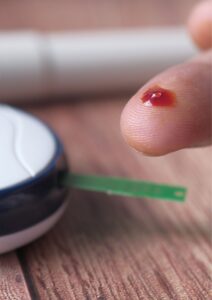Hello there, science lovers! We’ll examine a fascinating new advancement that has significantly improved diabetes care for children in today’s blog post. Imagine a society where young people with type 2 diabetes have the opportunity to lead fulfilling lives. Doesn’t that sound like science fiction? But what if I told you that we can truly make it happen and that this isn’t just a pipe dream any longer? You did indeed read it correctly. The FDA created history by approving Empagliflozin (Jardiance) and Synjardy (Empagliflozin + Hydrochlorothiazide, Metformin). These treatments are intended to assist children aged 10 and up in controlling their blood sugar levels and diet and exercise regimen. They open up a new realm of opportunities.
A New Chapter in the Care of Children with Diabetes
The fight against type 2 diabetes in children has newfound hope. The FDA recently approved the use of empagliflozin (Jardiance) and Synjardy (empagliflozin plus metformin hydrochloride, Synjardy) as adjuncts to diet and exercise for the management of blood sugar levels in children with type 2 diabetes who are 10 years of age or older.
Understanding Children’s Type 2 Diabetes
Although it was often believed that type 2 diabetes predominantly afflicted adults, recent years have seen increased instances of the disease among youngsters. It is a chronic condition that disrupts the body’s production and utilisation of insulin, which can result in dangerously high blood sugar levels. There will probably be 220,000 alarming cases in the United States by 2060. People of race will experience the majority of these cases.
Hope can be seen in empagliflozin.
The active ingredient in Jardiance and Synjardy, empagliflozin, is a novel medication. It decreases the quantity of sugar in your blood by causing you to excrete more glucose. Empagliflozin was effective in a randomised, double-blind, placebo-controlled study involving children. The outcomes were positive. The empagliflozin group displayed an average decrease in their haemoglobin A1c, a measure of average blood sugar, compared to the placebo group.
Linagliptin was used with empagliflozin in clinical research.
The effectiveness and safety of empagliflozin in combination with linagliptin, a different medication licenced for use in individuals with type 2 diabetes, is now being thoroughly investigated. This study will provide crucial details on how these medications affect young patients’ blood sugar levels, which will assist in enhancing care for children with diabetes.
Effects on the Body and safety precautions
Although getting these medications approved is a significant step in the right direction, being aware of potential adverse effects is crucial. Children who take empagliflozin are more likely to experience hypoglycemia or low blood sugar. Adults who take it risk developing urinary tract infections or fungus infections in the female reproductive system. People who take metformin frequently have diarrhoea, sickness, or stomach issues.
As we wrap up our journey through the exciting landscape of pediatric diabetes care, let’s take a moment to appreciate the beacon of hope the FDA has lit with their endorsement of Jardiance and Synjardy. This monumental decision marks the beginning of a new day, a brighter future for children battling type 2 diabetes. The power of relentless research and medical innovation shines brightly in this breakthrough, reminding us that every step forward in science moves us closer to turning the tide in the fight against pediatric diabetes. For the children and families living with the daily realities of type 2 diabetes, this isn’t just a blip on the medical timeline – it’s a life-changing milestone in their health journey.








